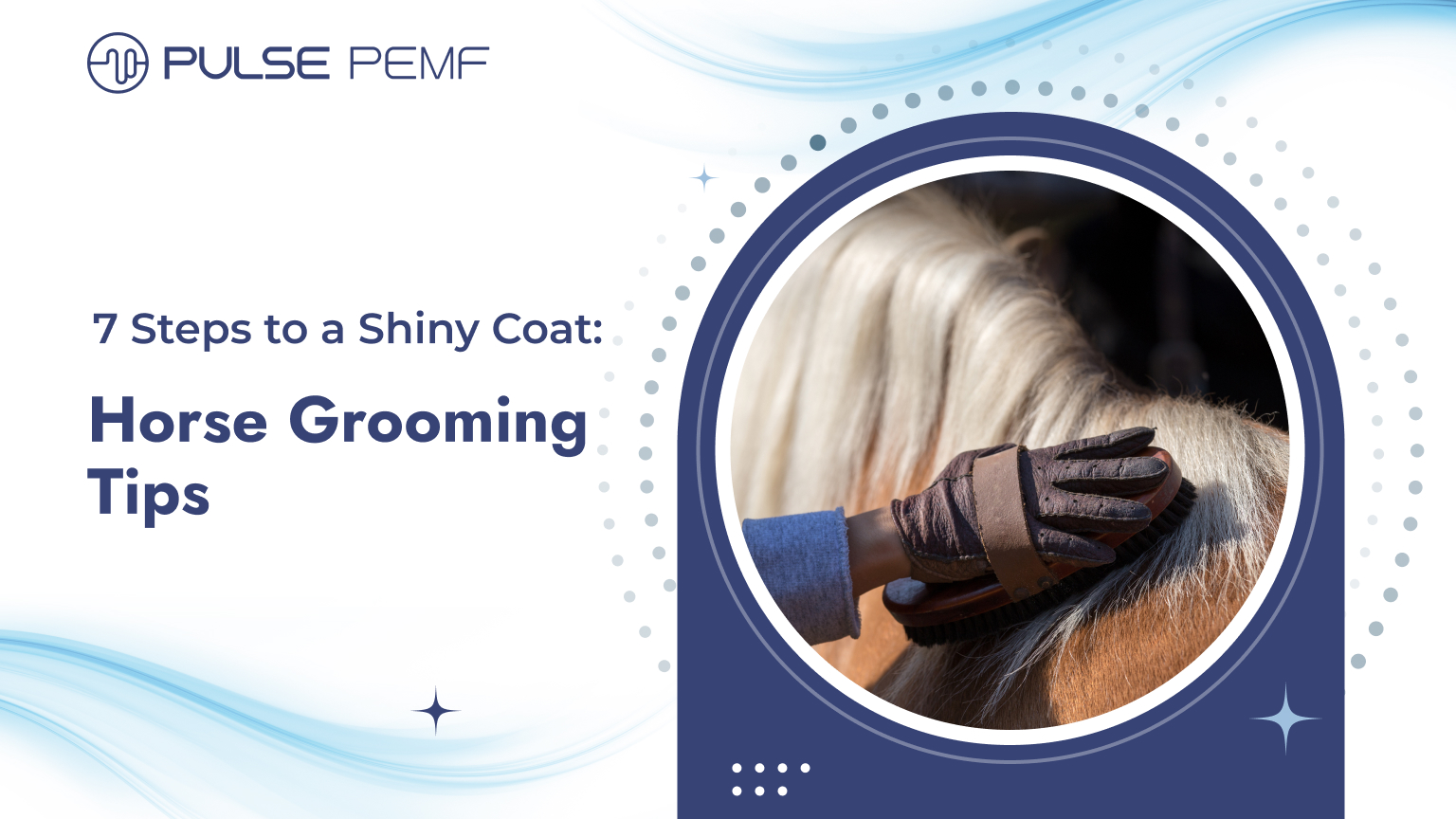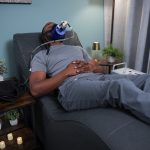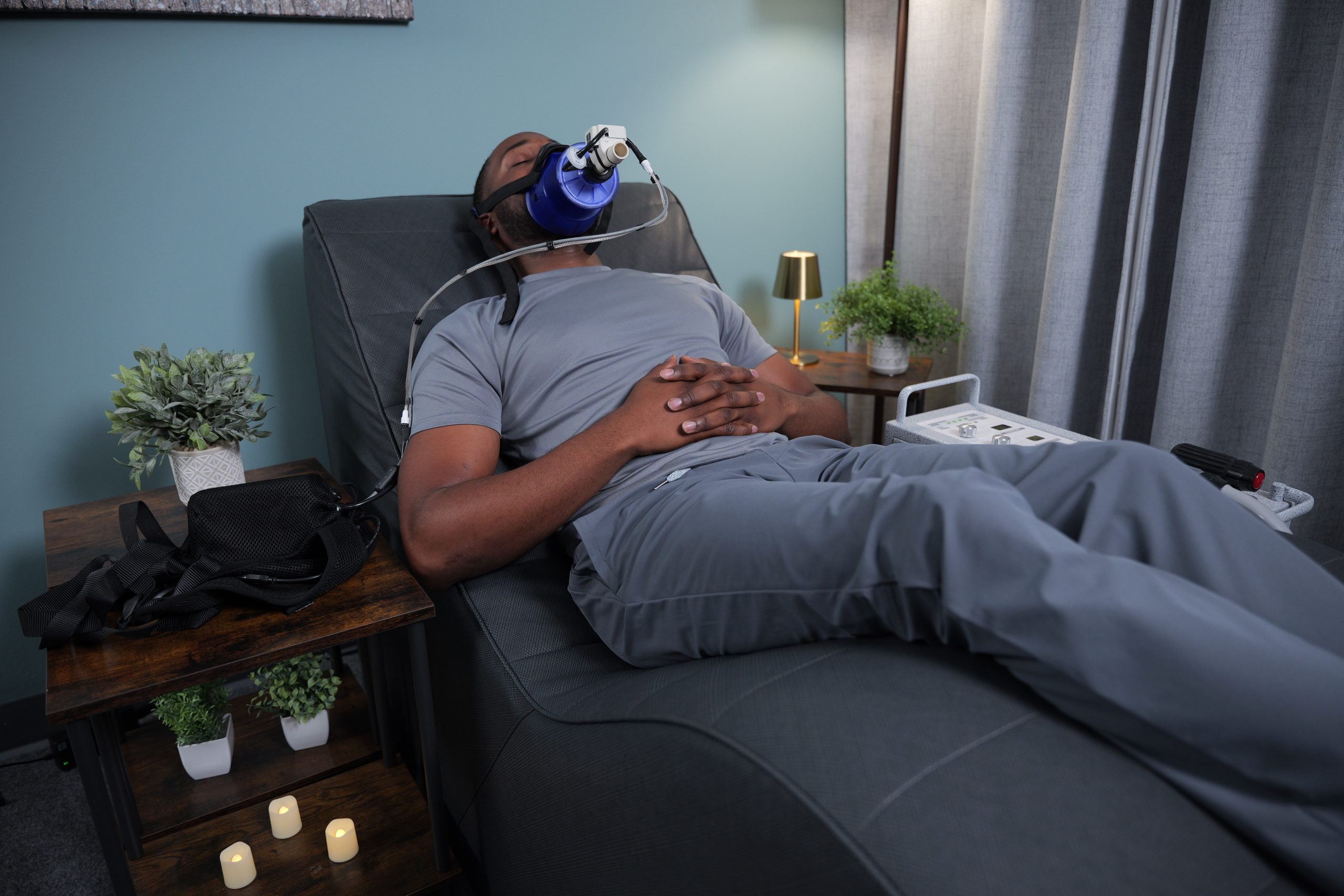A shiny coat is a sign of a healthy and well-cared-for horse. Regular grooming is essential for maintaining your horse’s coat health and appearance. By following a consistent horse grooming routine, you can help their coat look its best.
This blog post will provide you with seven actionable horse grooming tips to achieve a shiny, healthy coat. Let’s dive in and discover how to groom your horse to perfection!
Step 1: Start with Proper Nutrition
Importance of Diet for Coat Health
A healthy and shiny coat starts from within. A balanced diet that is rich in Omega-3 fatty acids, vitamins, and minerals can significantly improve your horse’s coat quality. These nutrients play a vital role in hair growth, hydration, and overall health.
Consider incorporating supplements like flaxseed or oils into your horse’s diet to boost their intake of Omega-3 fatty acids. These fatty acids are known for their ability to improve coat health and reduce inflammation.
Step 2: Regular Brushing
Brushing to Distribute Natural Oils
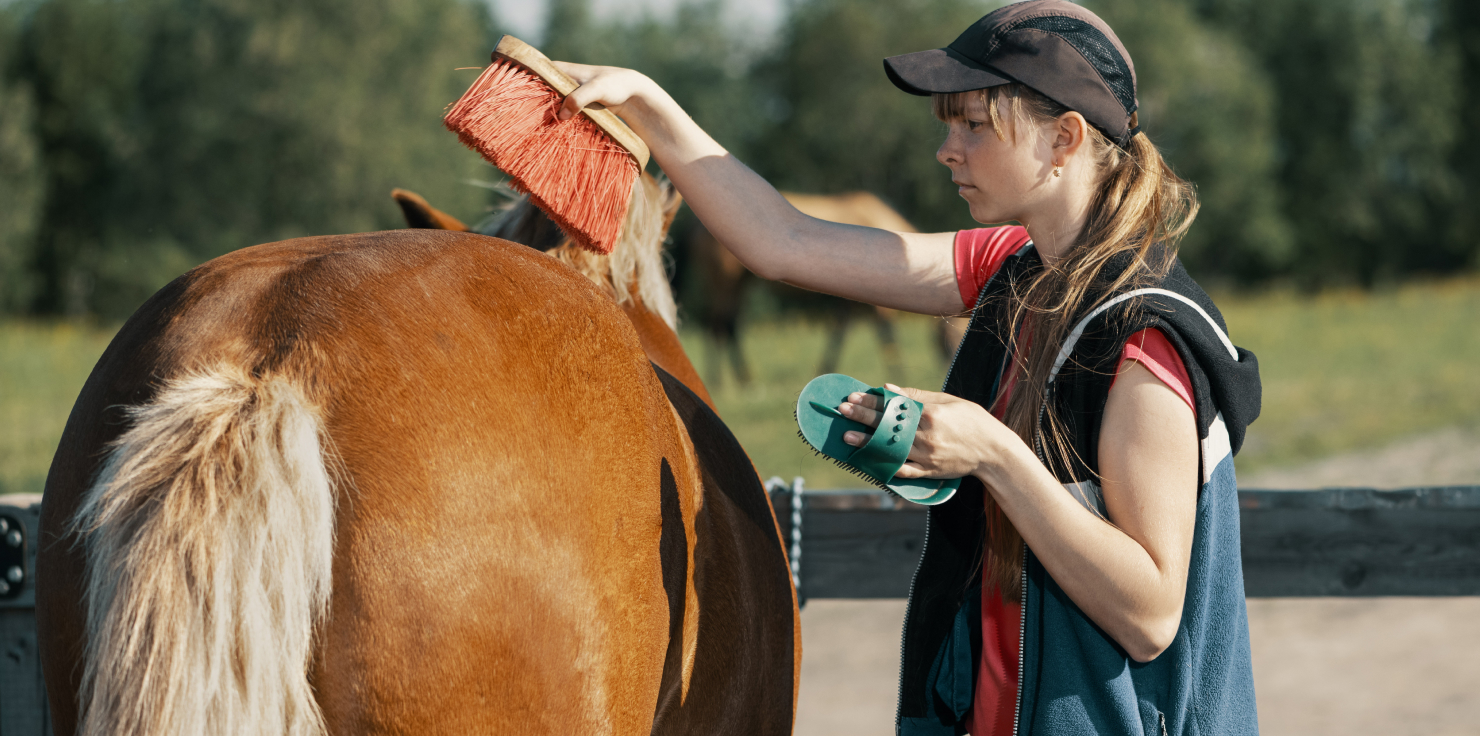
Regular brushing is an essential step when horse grooming. Brushing stimulates the skin, which helps to distribute natural oils that nourish the hair follicles. This promotes a healthy coat with a natural shine.
Recommended Brushing Techniques
- Daily Brushing: Aim for at least 15-20 minutes of brushing per day to keep your horse’s coat clean and tangle-free.
- Brushing Techniques: Use a curry comb to remove dirt and loose hair. Follow up with a body brush to distribute natural oils and create a shine. A finishing brush can be used to smooth the coat and remove any remaining dirt or debris.
Choosing the Right Brush
The type of brush you use will depend on your horse’s coat type. For horses with thick, coarse coats, a curry comb is a good choice. For horses with finer coats, a body brush or finishing brush may be more suitable. Experiment with different brushes to find the best combination for your horse.
Step 3: Bathing the Right Way
When and How to Bathe Your Horse
The frequency of bathing your horse will depend on their coat type, the climate, and their level of activity. Horses with oily coats may need more frequent baths, while those with dry coats may benefit from less frequent bathing.
When bathing your horse, use a gentle shampoo that is specifically formulated for horses. Avoid using human shampoos, as they can strip the natural oils from your horse’s coat.
Using Coat Conditioners
After shampooing, consider using a coat conditioner or detangler to help maintain moisture and sheen. These products can help prevent dryness and tangles, leaving your horse’s coat soft and silky.
Choose a conditioner that is specifically designed for horses and is free from harsh chemicals. Apply the conditioner according to the product instructions, and rinse thoroughly.
Step 4: Regular Grooming for Shedding and Coat Maintenance
Horse Grooming During Shedding Season
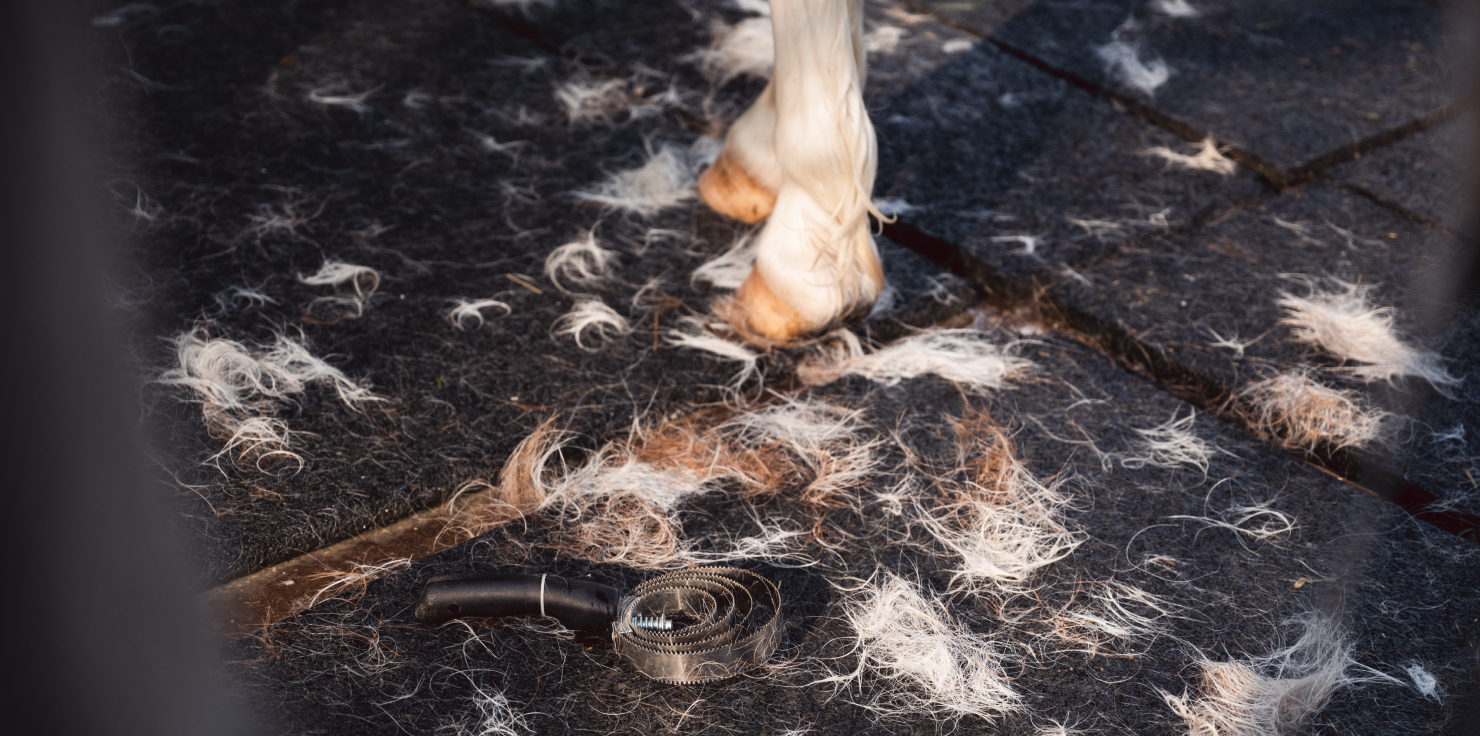
During shedding season, regular horse grooming is especially important. Shedding helps to remove dead hair and promote the growth of a healthy new coat.
Tools to assist in shedding could include:
- Deshedding Tools: Use a deshedding tool or rake to efficiently remove loose hair.
- Undercoat Rakes: These tools are specifically designed to penetrate the undercoat and remove dead hair.
By regularly grooming your horse during shedding season, you can help them maintain a healthy and shiny coat.
Step 5: Clipping and Trimming
Clipping for a Neat Appearance
Clipping your horse’s coat can give them a polished appearance, especially for show horses. However, it’s important to consider the climate and your horse’s coat type before deciding to clip.
If you choose to clip your horse, do so during the cooler months when their natural coat is thickest. Avoid clipping during the hottest months of the year, as it can affect their ability to regulate their body temperature.
Maintaining the Mane and Tail
Brush your horse’s mane and tail regularly to prevent tangles and mats. Use a detangling spray or conditioner to help with stubborn knots. Clean the mane and tail with a gentle shampoo or conditioner to remove dirt and debris.
If desired, you can style your horse’s mane and tail using braids, ribbons, or other decorative elements. However, be mindful of your horse’s comfort and avoid using excessive amounts of products.
Step 6: Addressing Skin Health
Monitor for Skin Issues
Skin conditions can impact your horse’s coat health. Keep an eye out for dry patches, redness, or other signs of skin irritation. Regularly inspect your horse’s skin for parasites like mites, ticks, or lice.
Moisturizing the Skin
To prevent dryness and promote a healthy coat, consider using a skin moisturizer or oil. Natural oils like coconut oil can be applied to the skin to help nourish and hydrate.
Remember to test any new products on a small area of your horse’s skin before applying them to a larger area to ensure there are no adverse reactions.
Step 7: Regular Exercise for Circulation
How Exercise Impacts Coat Health
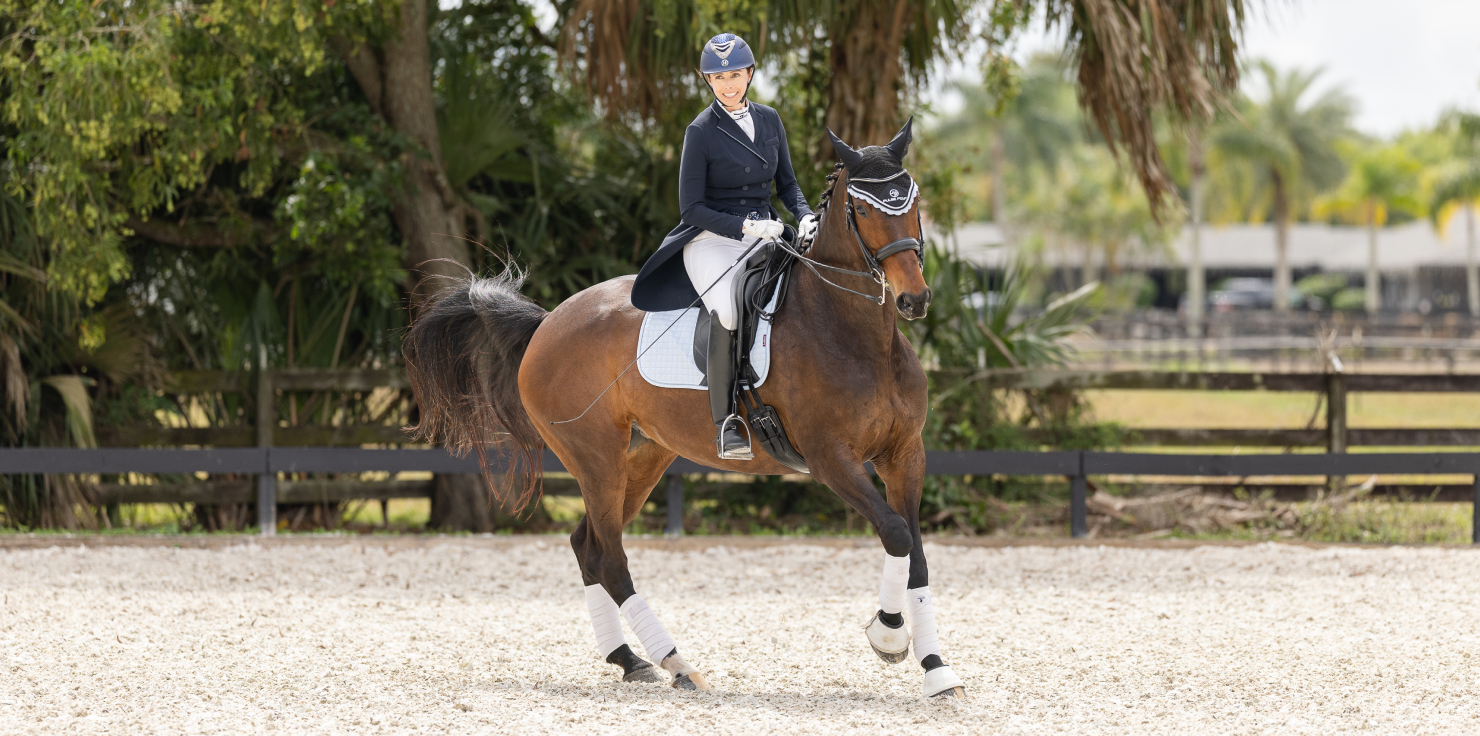
Regular exercise is not only beneficial for your horse’s overall health but also plays a vital role in maintaining a shiny coat. Exercise helps to improve circulation, which ensures that nutrients and oils are distributed evenly throughout the body. This, in turn, promotes healthy hair growth and a vibrant coat.
Conclusion
By following these horse grooming tips, you can help your beloved companion maintain a healthy and shiny coat. Regular grooming, combined with a balanced diet and exercise, will contribute to your horse’s overall well-being and appearance.
Remember, a beautiful coat is a reflection of a healthy horse. With consistent care and attention, you can help your horse look and feel their best!

